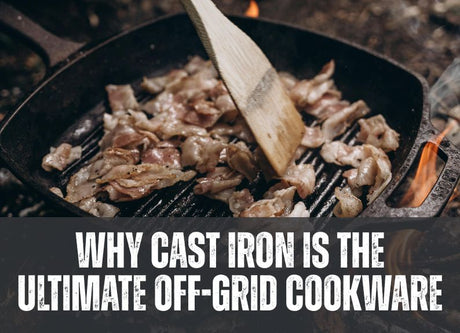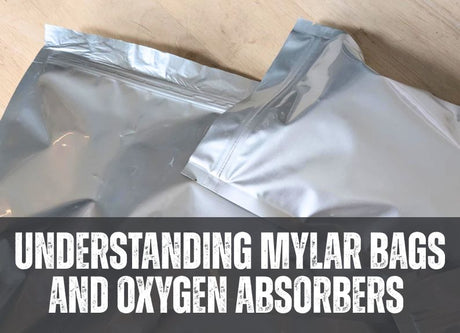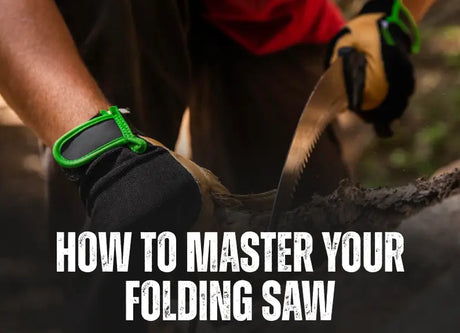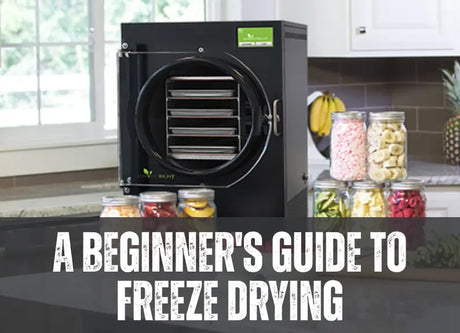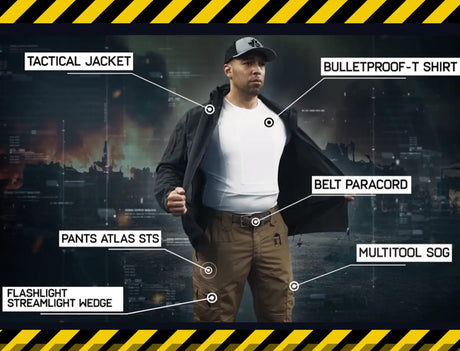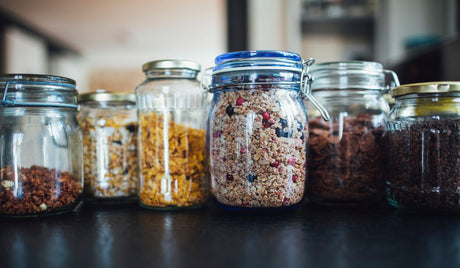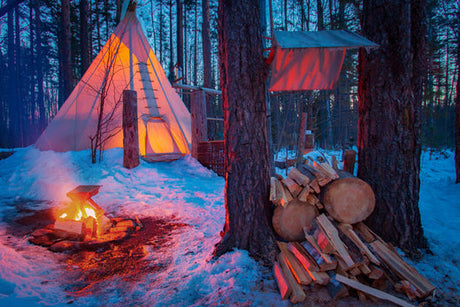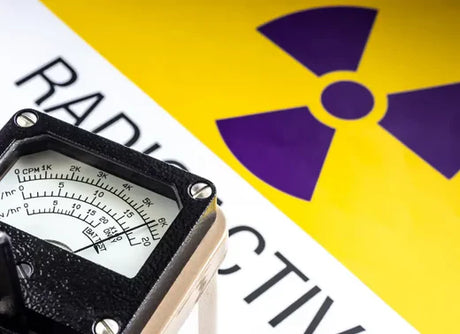The number-one threat to your survival in the winter is exposure to the elements. This can happen in multiple ways, but what will kill preppers is a combination of factors resulting from poor planning around winter conditions. In central Canada, our biggest concern can be the wind chill, which can frequently reach below -55° celsius. In these temperatures, frostbite and hypothermia need to be taken very seriously. In this blog, we’re going to lay out how your body works in the cold, and the essentials for surviving even the most frigid prairie winter.
Know how to prioritize your energy

Your body wants to keep you warm, even if this process is detrimental to you in the long run. When you are exposed to winter temperatures, your body begins a process of thermoregulation known as thermogenesis. In an extreme winter scenario, your number one goal should be to attempt to prevent this process from occurring as much as possible.
When you enter the backcountry in the winter, your lack of prioritizing can lead to death in very little time. We recommend planning your site ahead of time, and ensuring you have adequate supplies to sustain yourself. Start with this simple checklist:
- Start a fire immediately after you have established your site. Plan for things like damp wood, difficulty lighting your kindling, and more. Knowing how to start a fire in a multitude of ways is the most fundamental survival tool you have.
- Construct a shelter which will hold in heat and vent out toxic carbon monoxide fumes.
- Collect enough firewood to sustain the heat of your shelter and your fire throughout the day and night.
- Begin to seek out food only once you have established a base camp that is sufficiently warm. Hunting often uses excessive energy, and you will need a warm area to recoup and maintain your strength.
Preventing the process of thermogenesis is key to your survival
Thermogenesis is the process your body uses to convert calories into heat. Thermogenesis is sustained from a combination of carbohydrates, lipids, and proteins; how much of each your body uses is influenced by intensity of shivering and by modifications in energy reserves and nutritional status. While thermogenesis is an important part of your body's inherent survival mechanisms, and may save your life in the short-term, long-term survival relies on preventing this energy hoarding process from being your primary source of warmth. In any kind of survival situation, your access to adequate nutrition will be limited by your ability and by the environment you find yourself in. The overuse of your body’s energy stores is how even the most experienced outdoorsmen and survivalists die from exposure.
Our bodies are built for survival, but sometimes the mechanisms the body employs can hamper us in the long term. When you are exposed to cold temperatures, your body begins to lose heat faster than it’s produced. This is basic thermodynamics, heat will always be drawn towards colder molecules ––just like leaving a hot cup of coffee on the counter. The body is designed to try and keep you alive at all costs; if your body becomes too cold, it will initiate a process called thermogenesis. This process can rapidly deplete your body’s stores of energy in an attempt to convert those calories into heat. Hypothermia, which is caused by prolonged exposure to very cold temperatures, will set in quickly if you aren’t able to replenish or conserve that energy. Lengthy exposure to the extreme cold combined with the use of calories needed for fire maintenance and hunting will quickly use up your body’s stored energy, leading to lower body temperatures, causing hypothermia and eventually, death.
3 survival essentials to prevent death by exposure

-
Warm Shelter is the first priority
No matter how you build it, no matter the materials, you need to focus on creating a warm shelter. There are a number of options for building a shelter, but we recommend you find a wood stove compatible tent, like our NorTent Gamme 6, which is specifically designed to hold heat and eliminate carbon monoxide through the top vent and structural design.
The structure you choose should depend on how you are transporting it, and the type of survival situation you are preparing for. For example, a heavy canvas tent is durable and long lasting, but it is also very heavy, and better suited to a semi-permanent camp. A lightweight tent made of sil-nylon is easier to transport, durable, and faster to put up or strike down. Find the shelter that is right for your needs. We also recommend that you acquire an understanding of building warm, strong, impromptu shelters from natural materials and limited supplies. This is an essential skill, and we have more information on shelters on our comprehensive youtube channel. Learn the essentials for winter backcountry survival by watching me survive in a variety of winter situations. - Firewood collection is the best use of your energy
-
Having a store of food is key
Food that is freeze dried is specifically designed for both taste and nutrition. Ensuring you have a good cache of this kind of food is essential. It will supplement the food you are able to hunt or gather, and can deliver essential nutrients in an emergency. Moreover, freeze dried food is lightweight, easy to pack and carry, and only requires water to make a delicious meal.
If you start to experience any signs of thermogenesis, or worse, symptoms of hypothermia, consuming hot food and liquids can increase your body temperature to a safe and healthy level, preventing excessive calorie loss or even death.
If you have a warm shelter, you are already using far less valuable calories than you would be if you were cold. Prioritize firewood collection. Ensure you always seek out deadfall so that your wood is dry and burns well without smoke.
Having an adequate fire burning consistently can be the difference between thriving, and barely surviving. Maintaining your body temperature and eliminating exposure to the cold will save your life.
Hypothermia is a major threat to your survival

If you are unable to upkeep your calorie intake, your body temperature will begin to drop rapidly. Often, the onset of hypothermia is caused by the decrease in blood sugar, or hypoglycemia. Your body generates heat by using a system of thermoregulation. This system uses your metabolism to regulate the temperature of your body in spite of the conditions it is located in; thermogenesis is a by-product of this system.
Hypothermia has four general stages: mild, moderate, severe, and profound. If you are alone in the backcountry, it is absolutely imperative that you recognize the symptoms of hypothermia, and get to a warm shelter as soon as possible. This is especially true due to the onset of severe confusion as hypothermia progresses.
Know the most common symptoms of hypothermia in adults

When you have mild or moderate hypothermia, it is critical that you, and/or your group members are moved to a warm location and are able to be quickly administered hot, nutritious liquids in order to rapidly warm the body. This is why we stress the critical importance of a warm shelter as your first priority when you head into the backcountry.
These symptoms, especially when they occur all together, are a key factor for identifying hypothermia. We recommend you know them by heart.
-
Shivering
-
Exhaustion, extreme fatigue, drowsiness
-
Confusion
-
Lack of coordination
-
Memory loss
- Slurred speech
Understanding thermoregulation is your secret weapon in winter survival prepping
One thing that will often lead to disaster in a survival scenario, is the failure to prioritize tasks. When you try to do the wrong things first, you often run out of energy before you get the right things done. Exposure can be prevented by building an adequately warm shelter, and collecting sufficient firewood, instead of exhausting your energy in attempting to find food ––which often lacks the amount of nutrients you used up in order to acquire it. Knowing how thermoregulation and thermogenesis works is absolutely critical to your winter survival.


